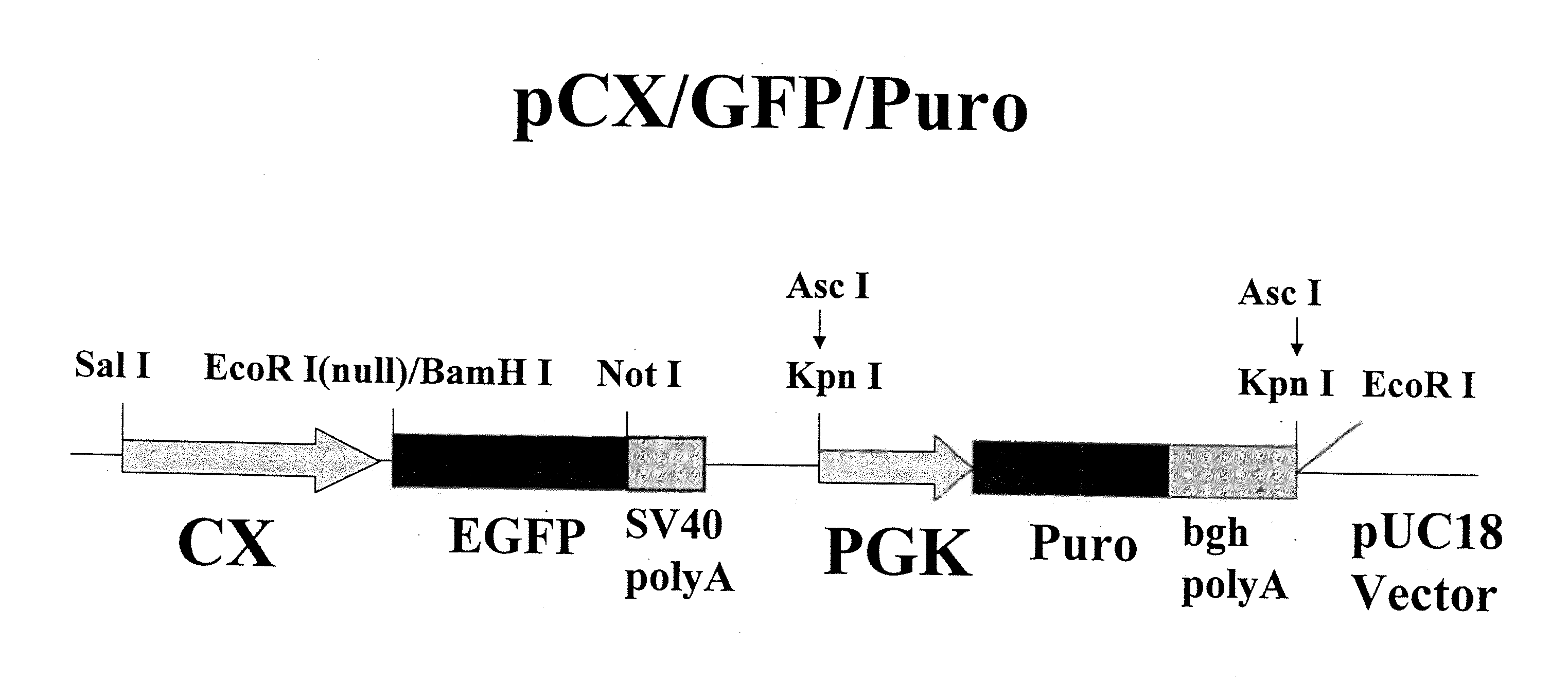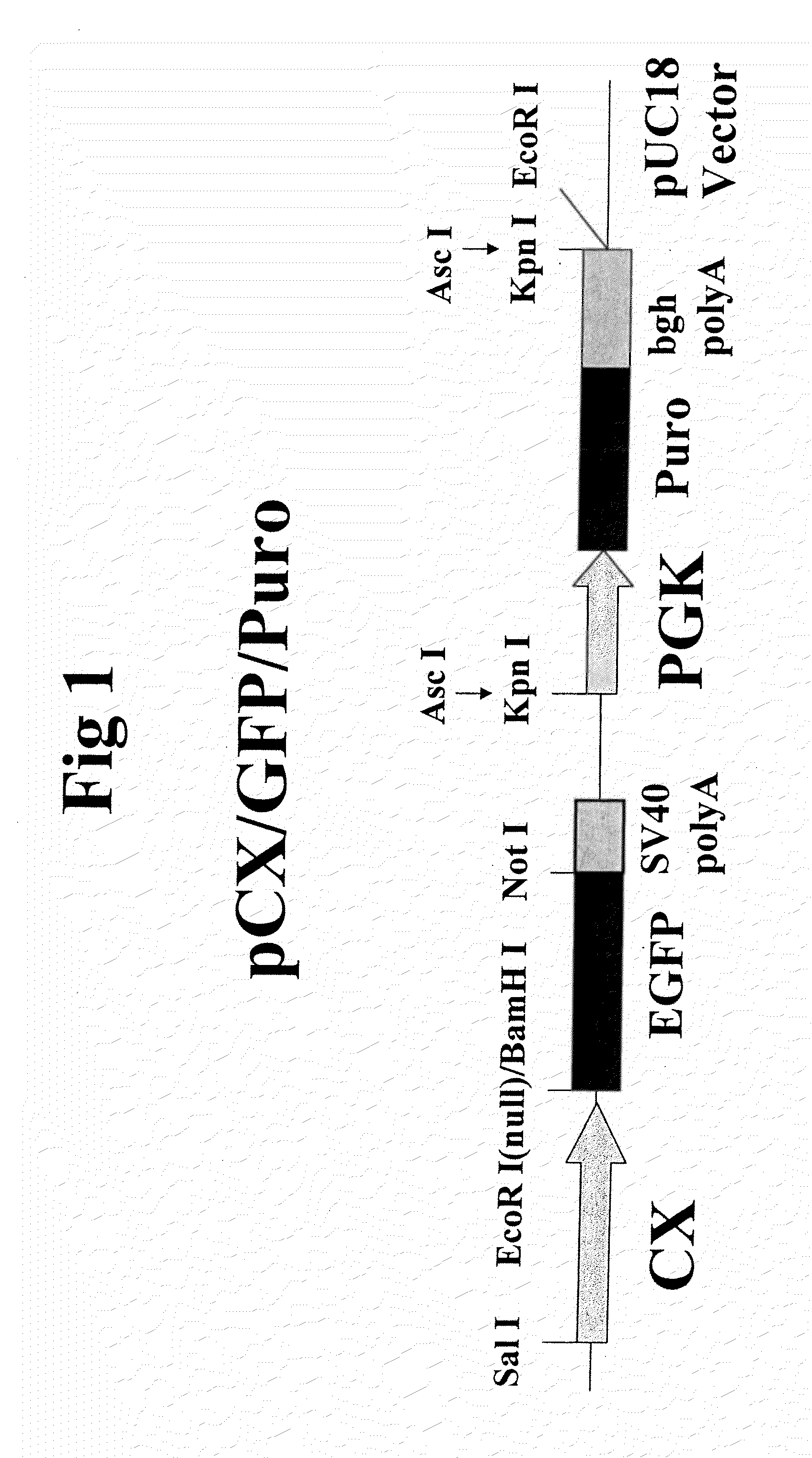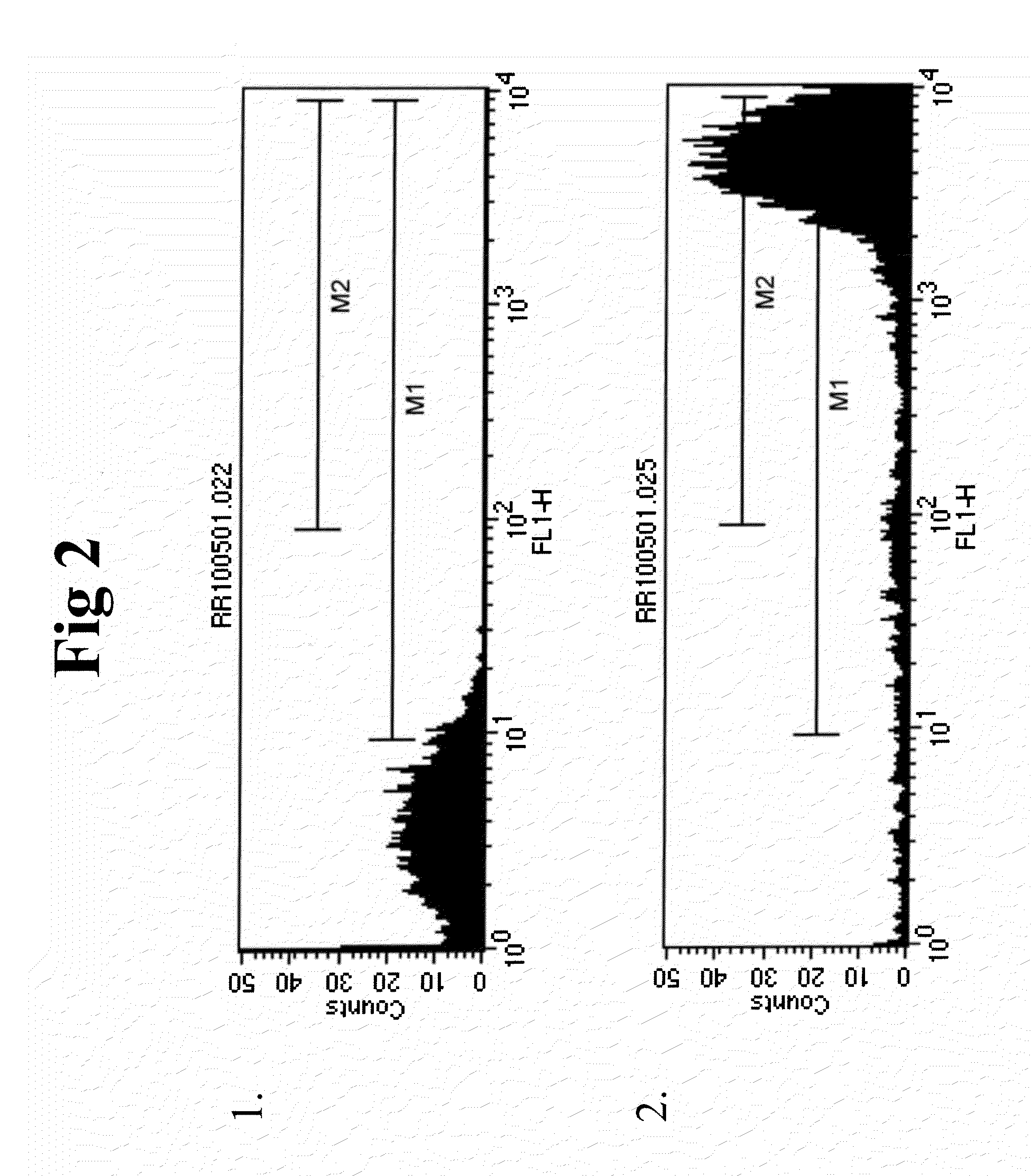Transgenic Aves Producing Human Polyclonal Antibodies
a technology of human polyclonal antibodies and transgenic chickens, which is applied in the field of transgenic animals, can solve the problems that the chicken is substantially incapable of mounting an immunoglobulin-mediated immune respons
- Summary
- Abstract
- Description
- Claims
- Application Information
AI Technical Summary
Problems solved by technology
Method used
Image
Examples
example 1
The Functional Disruption or Knockout of the Endogenous Avian Immunoglobulin Gene by Homologous Recombination in Avian Embryonic Stem Cells
[0105]The puromycin expression cassette (1.5 Kb) was released from pKO SelectPuro (Stratagene) by Asc 1 digestion. Referring to FIG. 4, the resulting fragment was inserted into the Asc I site of pKO Scrambler 910 (Strategene), and verified by a Xho I digestion. Thymidine Kinase expression cassette (2.0 Kb) was released from pKO SelectTK (Stratagene) by Rsr II digestion. The resulting fragment was inserted into the Rsr II site of pKO Scrambler Puro, and verified by Sph I digest. The plasmid illustrated in FIG. 4 is the starting point for all the IgH and IgL targeting constructs.
[0106]A genomic DNA fragment of chicken IgH (DJ-6) in germline configuration was obtained from Dr. Claude-Agnes Reynaud, University Paris, France. The 6.2 Kb EcoR I fragment contains coding sequences of the chicken IgH DX, D1, and JH. Referring to FIG. 5, the Dx, DI, and JH...
example 2
MMCT with DT40 cells as chromosome donors
[0116]DT40 cells containing chromosome of interest, such as an avian chromosome 15 lacking the immunoglobulin heavy chain locus, are grown up in DMEM / 10% FBS / 5% chicken serum / 10% tryptone phosphate broth / 0.1 μm β-mercaptoethanol / 2 mM glutamine / pen-strep and appropriate selection drug. 1.6×108 cells are obtained and demecolcine is added to 0.01 μg / ml final concentration (1:1000) and maintained for 48-72 hours. Fresh Percoll (Pharmacia) is prepared by equilibrating with NaCl to a final concentration of 150 mM and Hepes buffer, pH 7.0, to a final concentration of 50 mM. 17.5 ml of equilibrated Percoll is added to 6 50-ml Oak Ridge polycarbonate tubes (Nalgene). DT40 cells are harvested by pelleting (save 500 μl for Hoechst staining). The cell population is resuspended in 105 ml DMEM / 10% FBS / 20 μg / ml cytochalasin B (1.3×106 cells / ml) and cell clumps are broken up by trituration before loading onto the gradient. 210 μl of Demecolcine are added to...
example 3
The Functional Disruption or Knockout of the Endogenous Avian Immunoglobulin Heavy Chain Gene by Telomere-Associated Chromosomal Locus Deletion
[0117]In this embodiment of the invention, a construct comprising a telomere is used as a construct to eliminate the endogenous avian immunoglobulin heavy chain gene. In a preferred embodiment, the construct is comprised of a human immunoglobulin locus and an homologous region to avian chromosome 15 is used as a targeting construct to delete the avian immunoglobulin heavy chain locus. The construct is designed to accomplish the complete deletion of the avian immunoglobulin heavy chain locus and the construction of a chimeric chromosome containing avian DNA and a telomeric region comprising an unrearranged human immunoglobulin locus. Following recombination of this construct and an avian embryonic stem cell, embryonic stem cells with the deleted avian immunoglobulin locus can be selected and used to generate chimeric birds having functionally ...
PUM
| Property | Measurement | Unit |
|---|---|---|
| diameter | aaaaa | aaaaa |
| diameter | aaaaa | aaaaa |
| diameter | aaaaa | aaaaa |
Abstract
Description
Claims
Application Information
 Login to View More
Login to View More - R&D
- Intellectual Property
- Life Sciences
- Materials
- Tech Scout
- Unparalleled Data Quality
- Higher Quality Content
- 60% Fewer Hallucinations
Browse by: Latest US Patents, China's latest patents, Technical Efficacy Thesaurus, Application Domain, Technology Topic, Popular Technical Reports.
© 2025 PatSnap. All rights reserved.Legal|Privacy policy|Modern Slavery Act Transparency Statement|Sitemap|About US| Contact US: help@patsnap.com



